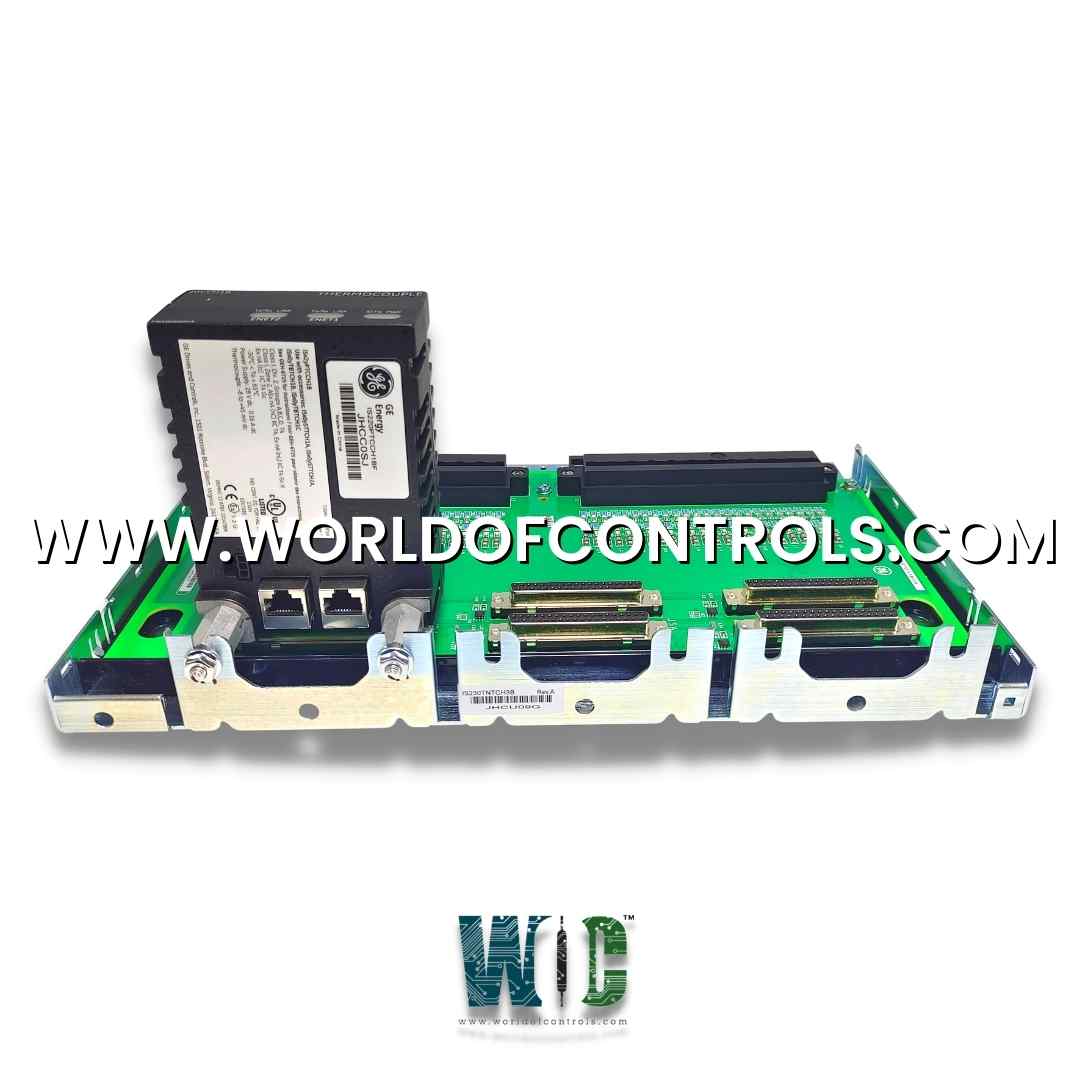
World Of Controls understands the criticality of your requirement and works towards reducing the lead time as much as possible.
IS230TNTCH3C - Simplex Thermocouple Input DIN Rail Module is available in stock which ships the same day.
IS230TNTCH3C - Simplex Thermocouple Input DIN Rail Module comes in UNUSED as well as REBUILT condition.
To avail our best deals for IS230TNTCH3C - Simplex Thermocouple Input DIN Rail Module, contact us and we will get back to you within 24 hours.
SPECIFICATIONS:
Part Number: IS230TNTCH3C
Manufacturer: General Electric
Series: Mark VIe
Product Type: Simplex Thermocouple Input DIN Rail Module
Thermocouple Type Supported: K, J, T, E, R, S, B
Input Channels: 1 (Simplex)
Accuracy: �0.1%
Output Signal: 4-20 mA
Power Supply: 24 V DC
Common Mode Voltage Range: +5 V dc
Maximum Lead Resistance: 15 Ohms
Analog output current: 0-20 mA
Operating temperature: 0 Deg C to 60 Deg C
Size: 8.26 cm high x 4.18 cm
Frequency: 50 or 60 Hz
Repair: 3-7 Days
Availability: In Stock
Weight: 2 lbs
Country of Origin: United States
FUNCTIONAL DESCRIPTION:
IS230TNTCH3C is a Simplex Thermocouple Input DIN Rail Module manufactured and designed by General Electric as part of the Mark VIe Series used in GE Distributed Turbine Control Systems. The Simplex Thermocouple Input DIN Rail Module is engineered to interface directly with thermocouples for precise temperature measurement in industrial control systems. It accepts the millivolt signals generated by a single thermocouple and converts them into standardized analog outputs compatible with distributed control systems (DCS) or PLCs. The module features automatic cold junction compensation, ensuring accurate temperature readings regardless of variations at the terminal connections.
The module also provides signal conditioning, including amplification and linearization according to the thermocouple type (K, J, T, E, R, S, B), and transmits a reliable output signal to the control system. Integrated diagnostics monitor the thermocouple and module status, detecting open circuits, shorts, or faults, which allows operators to quickly identify and resolve issues while maintaining continuous and safe operation of the temperature control process.
INSTALLATION:
The module should be securely mounted onto a standard 35 mm DIN rail inside a well-ventilated control panel, ensuring adequate spacing for heat dissipation and easy access to wiring. Connect the thermocouple to the designated input terminals, observing proper polarity, and link the analog output to the DCS or PLC input as per the system wiring diagram. Provide the specified 24 V DC power supply and ensure proper grounding of the control panel to minimize electrical noise.
Before commissioning, verify that all connections are secure and free from shorts. Power on the module and confirm that it is providing the correct output signal and that fault indicators are functioning. Additionally, ensure that the configured thermocouple type matches the connected sensor, allowing accurate temperature measurement and reliable operation within the control system.
OPERATION:
The module operates by receiving the voltage signal generated by a thermocouple, which is proportional to the temperature difference between the measurement junction and the reference junction. It first performs cold junction compensation to correct for ambient temperature variations at the terminals, ensuring precise temperature measurement. The incoming signal is then amplified, filtered, and linearized according to the selected thermocouple type (K, J, T, E, R, S, B), preparing it for transmission to the control system.
Once conditioned, the signal is converted into a standardized analog output compatible with DCS or PLC inputs. The module continuously monitors its own status and the connected thermocouple, detecting open circuits, shorted connections, or module faults. These diagnostic functions allow the system to alert operators promptly, ensuring reliable and uninterrupted temperature monitoring within industrial processes.
COMPATIBILITY:
The Simplex Thermocouple Input DIN Rail Module is compatible with a wide range of industrial control systems, including distributed control systems (DCS) and programmable logic controllers (PLCs). It supports all standard thermocouple types such as K, J, T, E, R, S, and B, making it versatile for various temperature measurement applications across power plants, chemical processing units, and turbine control systems. The module�s analog output options, including 4�20 mA and 0�10 V signals, ensure seamless integration with most control system input channels.
The module offers electrical isolation between input, output, and power circuits, which enhances safety and prevents signal interference. Its DIN rail form factor allows easy installation alongside other control and input/output modules in standard industrial panels. The module�s design ensures reliable operation even in environments with electrical noise, temperature fluctuations, or high humidity, providing flexibility for diverse industrial applications without requiring specialized configuration or additional interface hardware.
WOC maintains the largest inventory of replacement parts for GE Distributed Turbine Control Systems. We offer both new and refurbished boards, all backed by warranty, along with reliable repair services for malfunctioning components. Our experienced support team is available 24/7 to meet your OEM and automation requirements. For pricing, availability, or technical assistance, feel free to contact us by phone or email�our experts are always here to help.
What thermocouple types are supported by this module?
The module supports standard thermocouple types including K, J, T, E, R, S, and B. It automatically linearizes the input voltage for accurate temperature measurement. Non-standard thermocouples may require external signal conditioning or calibration adjustments.
How is cold junction compensation implemented?
Cold junction compensation is automatically performed by the module, which senses the ambient temperature at the input terminals. This compensates for the voltage difference between the measurement and reference junctions, ensuring precise temperature readings.
What output signals does the module provide?
The module can provide analog outputs of 4-20 mA or 0-10 V, depending on system configuration. These outputs are compatible with most DCS and PLC analog input channels, ensuring seamless integration.